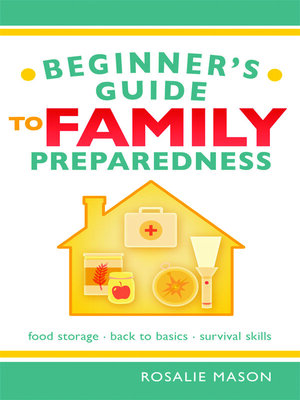
Sign up to save your library
With an OverDrive account, you can save your favorite libraries for at-a-glance information about availability. Find out more about OverDrive accounts.
Find this title in Libby, the library reading app by OverDrive.



Search for a digital library with this title
Title found at these libraries:
| Library Name | Distance |
|---|---|
| Loading... |
This indispensable guide to family emergency storage provides a wealth of information for anyone who is serious about being prepared.In the eight sections of this book you will find:
No other literature on the market offers a more in-depth guide to family emergency preparedness. Beginner's Guide to Family Preparedness is a valuable addition to any home or community library!
This useful book contains a wealth of valuable information that can help any family be prepared for emergencies that may arise. It is written in simple language so that beginners can use it, but the information far exceeds that found in most other books.
The beginner's guide is conveniently organized in eight sections. Part 1 discusses the why, what, how and where of food storage and recommends basic foods for a home storage program. Part 2 presents food-storage facts and covers fumigation, the storage environment, containers, shelving plans, and rotation. Dehydration, fermenting, smoking and curing meat are the themes of Part 3.
Non-food necessities such as medical supplies, clothing, and baby needs are treated in Part 4. Survival mechanics, Part 5, includes ovenless baking, soap making, candle molding, tanning hides, using white gas and kerosene, and tips for a survival garden.
Part 6 is a recipe section for survival foods, presenting simple, tasty recipes for many dishes including cookies and crackers, breads and cereals, main dishes, and desserts. Part 7 presents tips on techniques for sprouting grain, washing on a rub-board, building animal traps, storage utensils, other handy hints. The final chapter, Part 8, presents information for a comprehensive survival library.







